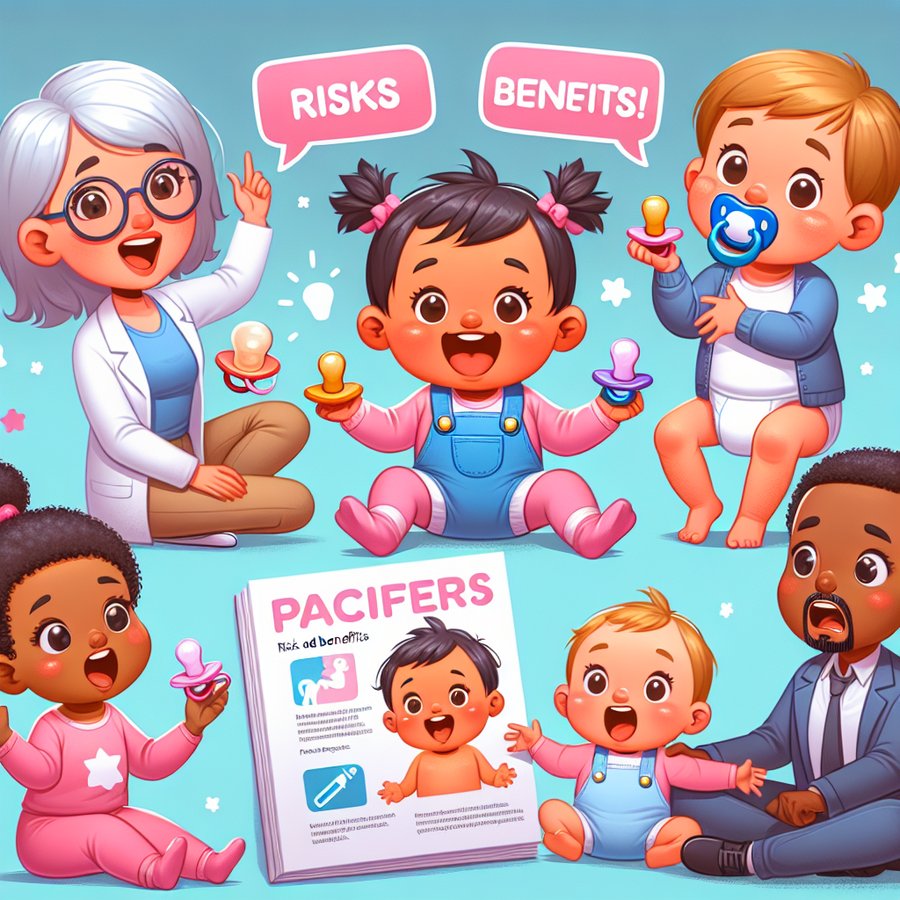Understanding Pacifiers (Benefits and Risks) is crucial for new parents navigating the early stages of parenthood. This article aims to provide an in-depth analysis of pacifiers, their advantages and disadvantages, and how they fit into your baby’s life. Whether you’re considering using a pacifier or seeking more information on their use, this guide is designed to answer all your questions.
What are Pacifiers and How Do They Work?
Pacifiers, often termed as soothers or binkies, are designed to satisfy a baby’s natural sucking reflex. This reflex is not only crucial for feeding but also provides comfort and security to infants. By mimicking the shape and sensation of a nipple, pacifiers can help soothe fussy babies, assist them in falling asleep, and even offer temporary distraction. Their use dates back centuries, evolving in material and design to meet modern safety standards.
However, it’s imperative to understand both the potential benefits and risks associated with pacifier use. This balanced perspective ensures parents can make informed decisions that best suit their baby’s needs and their family’s lifestyle.
Pacifiers (Benefits and Risks): A Comprehensive Overview
The World Health Organization and numerous pediatric studies have explored the use of pacifiers, identifying several benefits and risks. On the benefits side, pacifiers have been linked to a reduced risk of SIDS (Sudden Infant Death Syndrome), aid in soothing a colicky baby, and can be a helpful tool in managing stress and pain during medical procedures. Additionally, they are believed to support babies with a strong need to suck when they are not hungry.
Conversely, risks include potential dental issues like malocclusion, dependency problems where a child might become overly reliant on a pacifier for comfort, and possible interference with breastfeeding. It’s also essential to consider the risk of nipple confusion in newborns, which can affect a baby’s ability to latch onto the breast properly.
How to Introduce a Pacifier to Your Baby Safely
Introducing a pacifier to your baby requires timing and precaution. It’s generally recommended to wait until breastfeeding is well established, typically around 3 to 4 weeks of age, to avoid nipple confusion. Choosing the right type of pacifier is also critical; it should be one-piece, made of durable, safe materials, and appropriately sized for your baby’s age.
Moreover, maintaining hygiene is paramount. Regularly washing the pacifier and avoiding practices like cleaning it with your mouth can help prevent the transmission of bacteria. Monitoring its condition and replacing it at signs of wear and tear can also prevent choking hazards.
When to Wean Your Child Off the Pacifier
Weaning your child off a pacifier should be a gradual and patient process, typically suggested around the age of 2 to 3 years. This timing helps minimize the risk of dental problems and dependency issues. Strategies for weaning include limiting pacifier use to certain times of the day, like during naps and bedtime, and offering alternative forms of comfort such as cuddling or a favorite toy.
It’s essential to provide positive reinforcement and support throughout the weaning process, understanding that every child’s readiness and pace will differ. For personalized advice and strategies, consulting with a pediatrician can be very beneficial.
Additional Resources and Further Reading
For parents seeking more information or support regarding pacifier use, numerous resources are available. This includes consulting reputable health websites, pediatric care providers, and support groups. Additionally, our internal article on pacifiers, alongside topics on Sudden Infant Death Syndrome (SIDS), Breastfeeding, and Nipple Confusion, can provide a comprehensive look into related subjects.
Embracing the journey of parenthood comes with its challenges and learning curves. By gathering knowledge and seeking guidance when needed, you can navigate these early stages with confidence and provide the best care for your little one.













